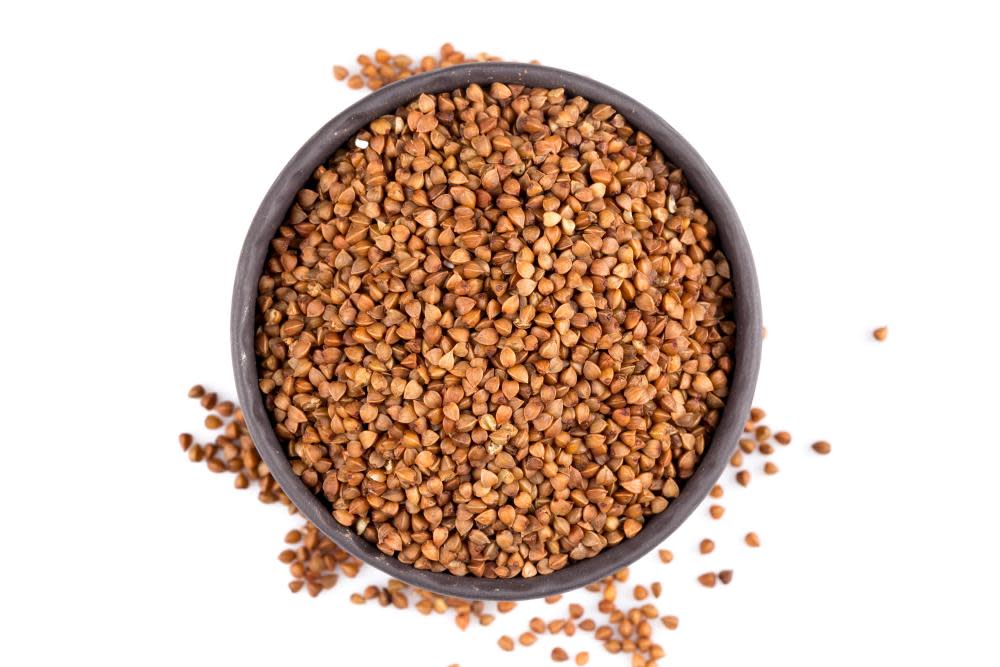How to buck up your buckwheat ideas

I see buckwheat in lots of recipes. How best to cook it? Mine turned out mushy.
Zeena, London SE24
When Alissa Timoshkina was growing up, buckwheat was something of a staple: “We’d have it for breakfast with milk and sugar, as a side to savoury dishes, or as a stuffing for pies or cabbage rolls,” says the Russian author of Salt & Time: Recipes from a Russian Kitchen and co-founder with Olia Hercules of the Cook for Ukraine fundraising campaign. “It’s not just comforting because it tastes like childhood, but it’s nutritionally good as well.”
The first thing to note is that buckwheat comes two ways: green (or untoasted) and toasted (known as kasha, or kasza in Polish). “It makes a big difference,” Timoshkina says. While the toasted stuff “has a lovely, nutty quality”, green has a habit of “coming out gloopy and almost gluey”. That said, Zuza Zak, author of Pierogi: Over 50 Recipes to Create Perfect Polish Dumplings, keeps both in her cupboard: “Sometimes I want that strong, toasted buckwheat – and that really is the taste of eastern Europe – but at others I want the milder flavour of untoasted buckwheat.”
What you don’t want, however, is a mushy texture, and one explanation for Zeena’s botched buckwheat could be that it was soaked before cooking. “It will fall apart if you do that,” Timoshkina says. “It’s such a tender grain.” Much better to add it straight to the pan or, as Zak does, give it a quick rinse first under cold water. Other mush-making culprits might be cooking it in too much water, or simply overcooking it: “Keep an eye on it, and keep tasting,” Timoshkina says.
So, what is the best way to cook buckwheat? Timoshkina treats hers like couscous, putting it in a pan with salted boiling water “to just above ‘grain’ level”, then covering and leaving overnight: “The buckwheat absorbs all the salty water, but doesn’t overcook.” Granted, this requires a degree of forward planning, but when dinner time arrives the next day, all that’s left to do is incorporate the buckwheat into herby salads or a mushroom stir-fry, or stuff it into cabbage rolls.
Another strategy that requires some forethought is one Zak learned from her grandmother, for which buckwheat is cooked in salted water for about 15 minutes (until the liquid is absorbed), then covered. “Wrap in a tea towel so the lid is secure, then wrap in a big towel or blanket. Grandma would then stick the bundle under the duvet in Grandad’s bed for an hour.”
If, however, you don’t have the time or inclination for such behaviour, Zak suggests cooking it like rice. Again, cover the grouts with salted water (“maybe 1½cm over the top”), bring to a boil, cover and simmer until the water disappears. Take off the heat and leave to steam for 20-30 minutes, which makes all the difference: “It’s the secret to good kasza,” Zak says. “If Zeena does this and it’s still mushy, then she must have bad-quality kasza and I wouldn’t buy that one again.”
If you’re still in doubt, Timoshkina’s “foolproof option” would be to cook the grouts in “double the amount of salted water” then, once al dente (remember, taste, taste, taste), strain. Alternatively, use buckwheat in a risotto instead of arborio rice. It’s stirring stuff.
Got a culinary dilemma? Email feast@theguardian.com

 Yahoo News
Yahoo News 
